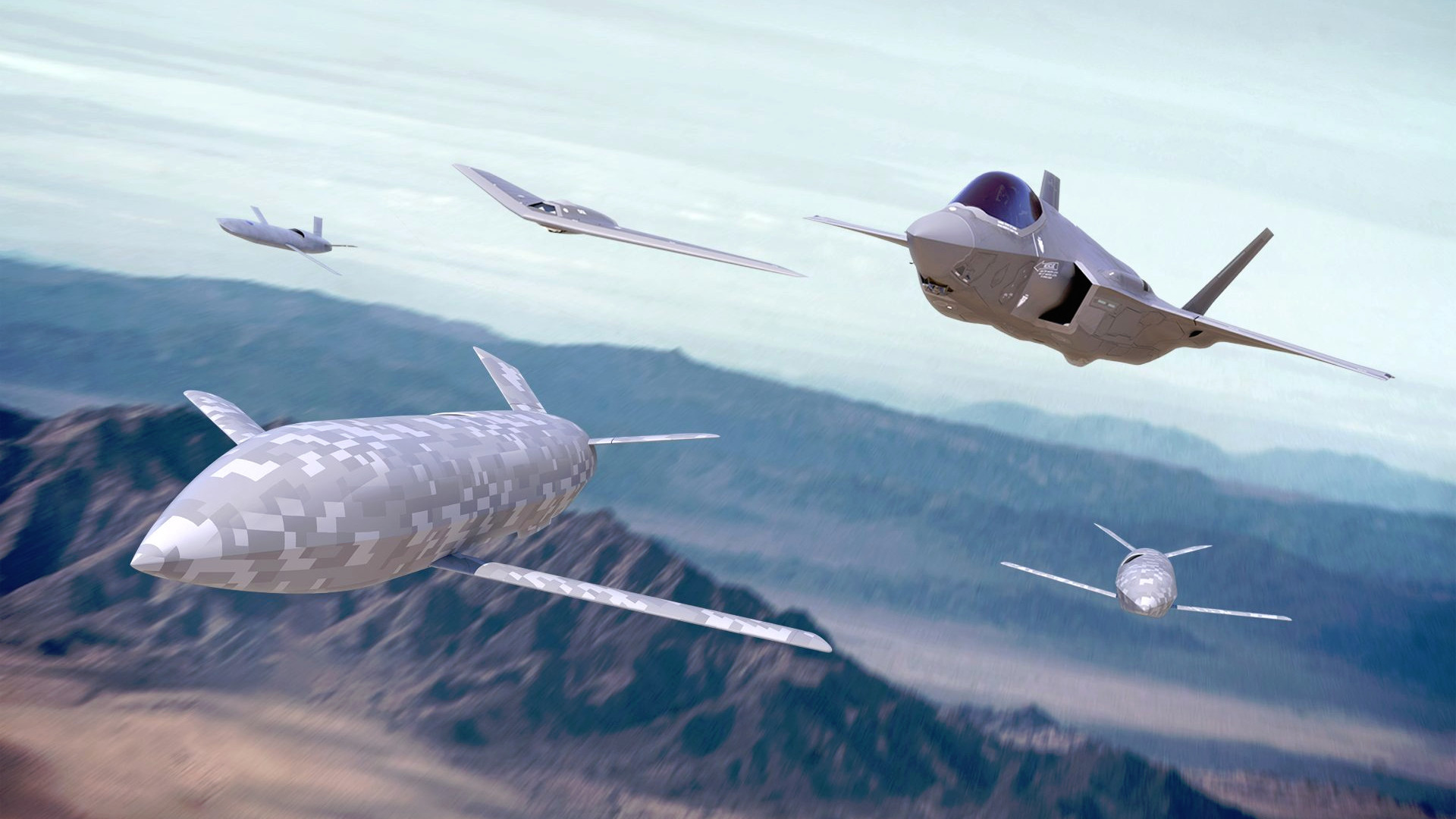Lockheed Martin says the stealthy F-35 Joint Strike Fighter now has a firmly demonstrated ability to act as an in-flight ‘quarterback’ for advanced drones like the U.S. Air Force’s future Collaborative Combat Aircraft (CCA) with the help of artificial intelligence-enabled systems. The company states that its testing has also shown a touchscreen tablet-like device is a workable interface for controlling multiple uncrewed aircraft simultaneously from the cockpit of the F-35, as well as the F-22 Raptor. For the U.S. Air Force, how pilots in crewed aircraft will actually manage CCAs during operations has emerged as an increasingly important question.
Details about F-35 and F-22 related crewed-uncrewed teaming developments were included in a press release that Lockheed Martin put out late yesterday, wrapping up various achievements for the company in 2024.

The F-35 “has the capability to control drones, including the U.S. Air Force’s future fleet of Collaborative Combat Aircraft. Recently, Lockheed Martin and industry partners demonstrated end-to-end connectivity including the seamless integration of AI technologies to control a drone in flight utilizing the same hardware and software architectures built for future F-35 flight testing,” the press release states. “These AI-enabled architectures allow Lockheed Martin to not only prove out piloted-drone teaming capabilities, but also incrementally improve them, bringing the U.S. Air Force’s family of systems vision to life.”
“Lockheed Martin has demonstrated its piloted-drone teaming interface, which can control multiple drones from the cockpit of an F-35 or F-22,” the release adds. “This technology allows a pilot to direct multiple drones to engage enemies using a touchscreen tablet in the cockpit of their 5th Gen aircraft.”

The press release also highlights prior crewed-uncrewed teaming work that Lockheed Martin’s famed Skunk Works advanced projects division has done with the University of Iowa’s Operator Performance Laboratory (OPL) using surrogate platforms. OPL has also been working with other companies, including Shield AI, as well as the U.S. military, to support advanced autonomy and drone development efforts in recent years.
In November 2024, Lockheed Martin notably announced it had conducted tests with OPL that saw a human controller in an L-39 Albatros jet use a touchscreen interface to order two L-29 Delfin jets, equipped with AI-enabled flight technology acting as surrogate drones, to engage simulated enemy fighters. This sounds very similar to the kind of control architecture the company says it has now demonstrated on the F-35.

When it comes to the Air Force’s CCA program, the effort is currently structured around iterative development cycles, with Anduril and General Atomics developing different drones now under what is known as Increment 1. Dozens of other contractors are working on ancillary developments, including autonomous technologies and control systems. The Air Force is still refining its requirements for Increment 2, but they are increasingly expected to call for more capable uncrewed aircraft designs that will also be more expensive. For its part, Lockheed Martin said last year that its losing pitch for Increment 1 was a very stealthy “gold plated” drone and that it has since refocused its attention on lower-cost, potentially even expendable designs.
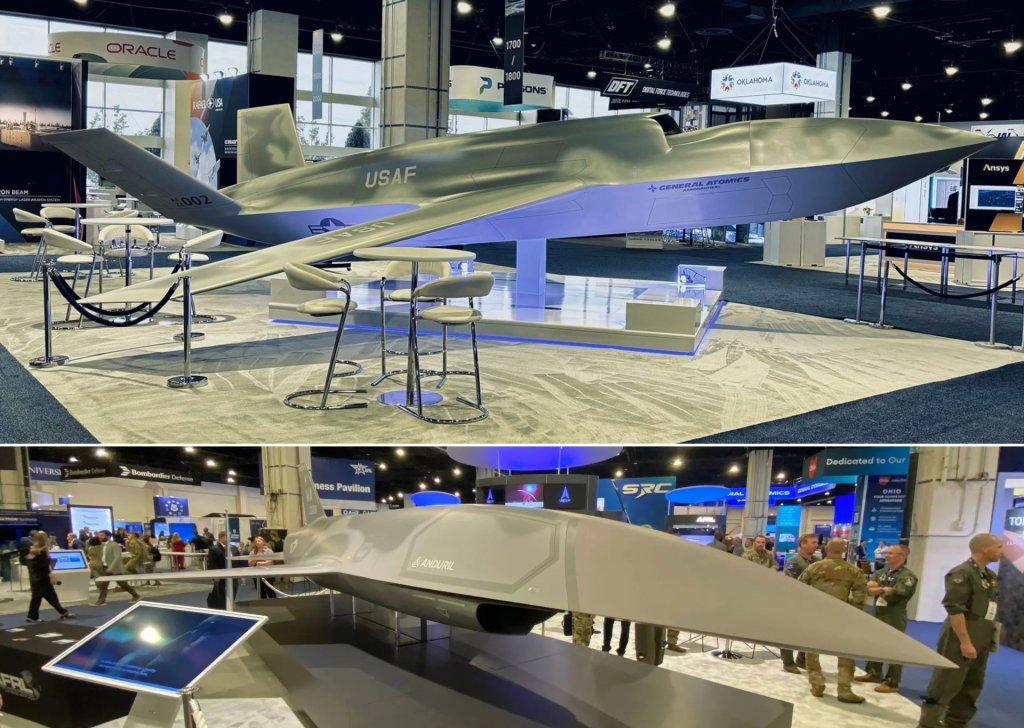
Air Force officials have said that the service could eventually buy between 100 and 150 Increment 1 CCAs, and thousands of drones across all of the program increments. The F-35 has also been identified in the past as one of the expected initial crewed companions for the drones. Even before the CCA concept was publicly codified, Lockheed Martin’s Skunk Works had outlined a detailed crewed-uncrewed teaming vision that included the Joint Strike Fighter.

The Air Force is also still very much in the process of developing new concepts of operations and tactics, techniques, and procedures for employing CCA drones operationally. How the drones will fit into the service’s force structure and be utilized in routine training and other day-to-day peacetime activities, along with what the maintenance and logistical demands will be, also remains to be seen. Questions about in-flight command and control have emerged as particularly important ones to answer in the near term.
“I was just talking to our program manager downstairs … and we were talking about what we think the number of aircraft, CCAs, that can be controlled by a crewed aircraft [is]. And I initially started out with a range of three to five,” Secretary of the Air Force Frank Kendall told TWZ and other reporters at the Air & Space Forces Association’s (AFA) main annual conference last September. “We’re talking about bigger numbers than that now. So we’re moving towards greater reliance on uncrewed aircraft working with crewed platforms to achieve air superiority and to do other missions.”
“One of the things you have to have if you’re going to use CCAs and have them be armed and … lethal is that they have to be under tight control. And, for me, one of the elements of that needs to be line-of-sight communications. And I think that that’s an important thing to have in the mix, secure, reliable line-of-sight communications. We’re not going to have aircraft going out and doing engagements uncontrolled,” the Air Force’s top civilian added at that time. “So the default, if they lose communications, would be for them to return to base, which takes them out of the fight. So we don’t want that to happen. And when they do do engagements, … we want them under tight control. So I think the mix of crewed and uncrewed aircraft, I think, is going to be the right answer for the foreseeable future.”
As Lockheed Martin’s new touting of its work on tablet-based control interfaces highlights, there is a significant debate now just about how pilots will physically issue orders and otherwise manage drones from their cockpits.
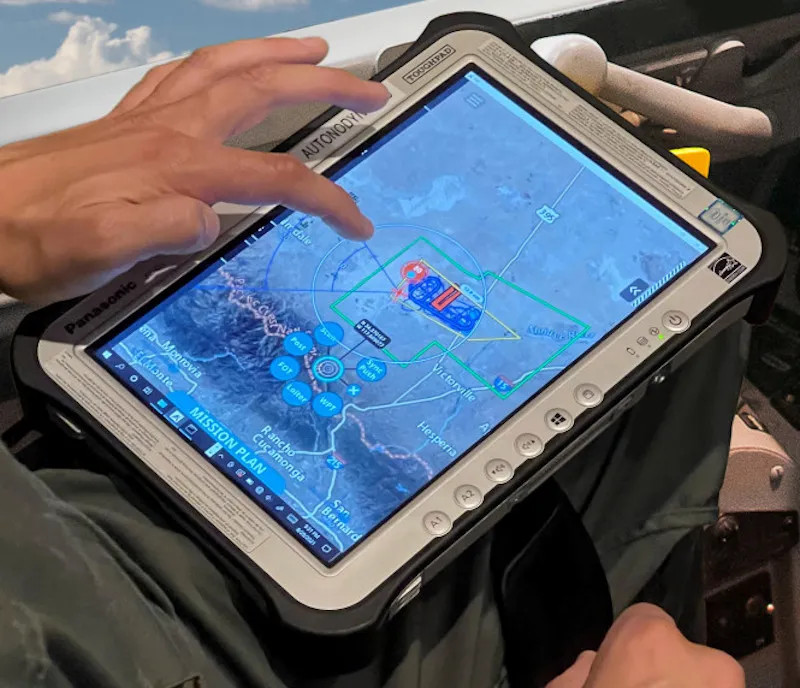
“There’s a lot of opinions amongst the Air Force about the right way to go [about controlling drones from other aircraft],” John Clark, then head of Skunk Works, also told The War Zone and others at the AFA gathering in September 2024. “The universal thought, though, is that this [a tablet or other touch-based interface] may be the fastest way to begin experimentation. It may not be the end state.”
“We’re working through a spectrum of options that are the minimum invasive opportunities, as well as something that’s more organically equipped, where there’s not even a tablet,” Clark added.
“We started with [the Air Force’s] Air Combat Command with tablets … There was this idea that they wanted to have this discreet control,” Michael Atwood, vice president of Advanced Programs for General Atomics, had previously said during an appearance on The Merge podcast in 2024. “I got to fly in one of these jets with a tablet. And it was really hard to fly the airplane, let alone the weapon system of my primary airplane, and spatially and temporally think about this other thing.”
The F-35 notably has the benefit here of already having an advanced wide-area digital touchscreen display in its cockpit. The Technology Refresh-3 (TR-3) configuration for the jets, which provides the software and hardware backbones to support the forthcoming Block 4 upgrades, also includes an enhanced panoramic cockpit display. Collins Aerospace, a division of Raytheon (now formally known as RTX), put out a glitzy computer-generated video last year, seen below, that offered a vision for how pilots might control CCA-like drones in the future. This included the F-35’s in-cockpit display being used for this purpose. The issuing of commands via tablet-like devices was also depicted.

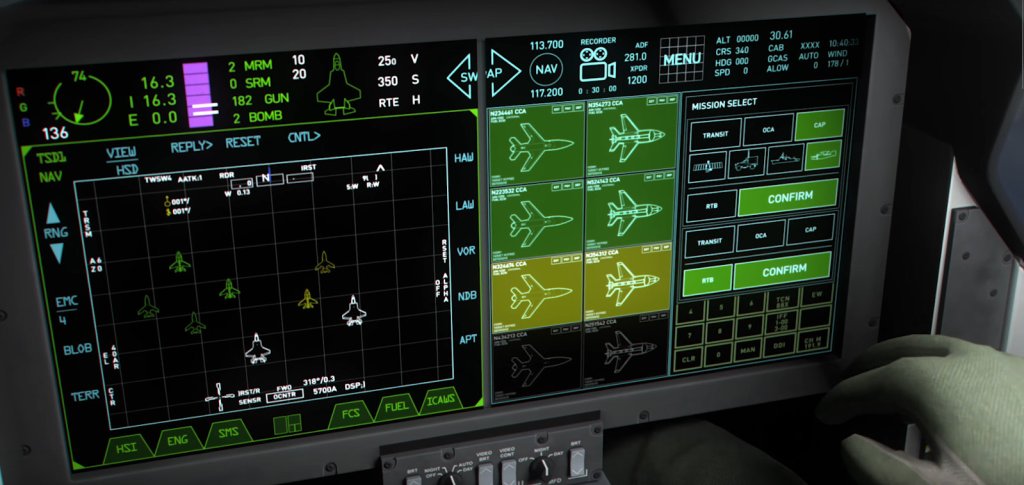
In addition, there are still many questions about the secure communications architectures that will be needed to support operations involving CCAs and similar drones, as well as for F-35s and F-22s to operate effectively in the airborne controller role. The F-35 could use the popular omnidirectional Link 16 network for this purpose, but doing so would make it easier for opponents to detect the fighter jet and the drone. The F-22, which has long only had the ability to transmit and not receive data via Link 16, faces similar issues.
Both the Joint Strike Fighter and the Raptor have specialized directional low probability of intercept/low probability of detection (LPI/LPD) datalinks, the Multifunctional Advanced Data Link (MADL) and Intra-Flight Data Link (IFDL), respectively. However, MADL cannot ‘talk’ to IFDL, or vice versa, and neither one can communicate directly with other links. Lockheed Martin and the U.S. military have been actively working on ways to ‘translate’ between MADL and IFDL, as well as between those links and others, including via communications gateway nodes on other crewed and uncrewed aircraft, in recent years. Regardless, equipping the drones themselves with MADL or IFDL could allow for direct highly-secure, jam resistant command links. We have seen the XQ-58 equipped with MADL, for instance, during tests. Using drones as translators and rebroadcasting nodes could work as well.
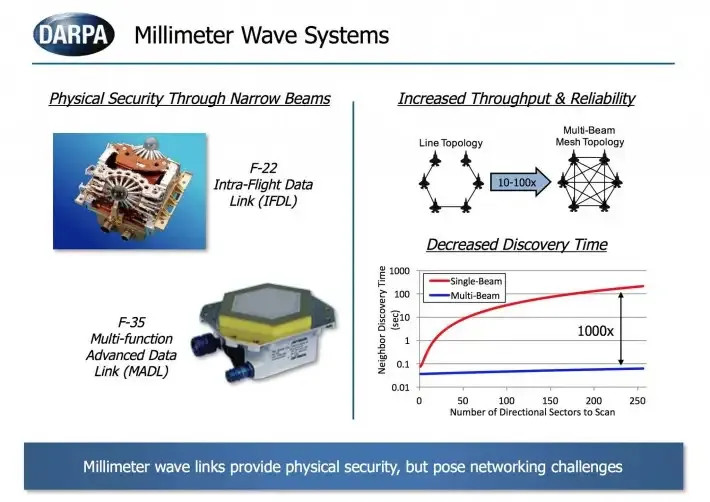
Regardless, Lockheed Martin’s centering of the F-35 (and F-22 to a lesser degree) in this discussion is also interesting given the significant uncertainty around plans for a new crewed sixth-generation stealth combat jet as part of the Air Force’s larger Next-Generation Air Dominance (NGAD) initiative. NGAD also includes the CCA program. Acting as an airborne drone controller has long been envisioned as a key role for the NGAD combat jet effort, which was originally crafted as a replacement for the F-22 and was subjected to a deep review last year. Various alternatives have been evaluated, including a significantly pared-back concept described as more of an F-35 follow-on that is focused primarily on the drone control mission. The Air Force has also separately backed off on any timeline for retiring the F-22, which continues to receive significant new upgrades.
President Donald Trump’s administration now has the task of deciding how to proceed, or not, with the NGAD combat jet amid broader serious concerns about the affordability of various top-priority Air Force programs, including the CCA program and plans for future stealth tankers. The service has previously said that the ballooning cost of the Sentinel intercontinental ballistic missile program, specifically, was a key factor in the decision to review the NGAD combat jet effort.

Expanding the ability of the F-35, specifically, to serve in the drone controller role has potential ramifications beyond the Air Force’s CCA program. The Air Force and Navy have already been working together on systems that will allow for the seamless exchange of control of CCAs and other drones belonging to either service during future operations. The U.S. Marine Corps, which is pursuing its own loyal wingman-type drones currently through experimentation with Kratos XQ-58 Valkyries, also has formal ties to the Air Force’s CCA program. All three services fly variants of the Joint Strike Fighter.
It’s also worth noting here that the U.S. military has been publicly demonstrating the ability of tactical jets to actively control drones in mid-air for nearly a decade now, at least. In 2015, a U.S. Marine Corps AV-8B Harrier jump jet flew notably together with a Kratos Unmanned Tactical Aerial Platform-22 (UTAP-22) drone in testing that included “command and control through the tactical data link.” Other experimentation is known to have occurred across the U.S. military since then, and this doesn’t account for additional work in the classified domain.
U.S. allies and partners, a growing number of which are also F-35 operators, may be included in CCA’s Increment 2 phase. Many of them have similar drone developments already underway that will require advanced control architectures, too. Commonality in control architectures could have operational benefits, especially during future coalition operations, as well as help accelerate development and spread out cost burdens. Explicit cooperation and collaboration between the United States, United Kingdom, and Australia on uncrewed capabilities, including autonomous technologies and related developments, is a notable element of the trilateral AUKUS security partnership.
“Work continues with urgency in 2025, with a particular focus on further integrating drones with the F-22 and F-35 in real-world flight tests to enable rapid testing and learning that can be put into action in the near term,” Lockheed Martin’s press release from yesterday adds. “These capabilities ensure America and its allies stay ahead of ready, equipped with flexible, scalable technologies that rapidly adapt to the evolving demands of future defense operations, securing America’s dominance of the skies.”
The F-35, in particular, looks on track to become a particularly important crewed companion for Air Force CCAs, as well as other advanced drones, in the coming years.
Contact the author: joe@twz.com
